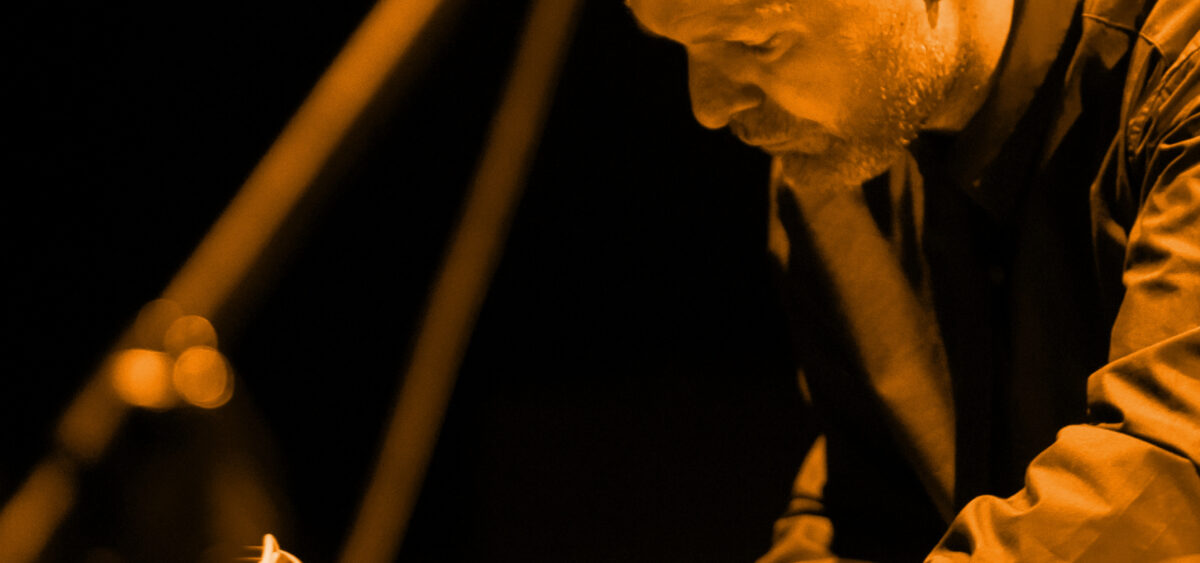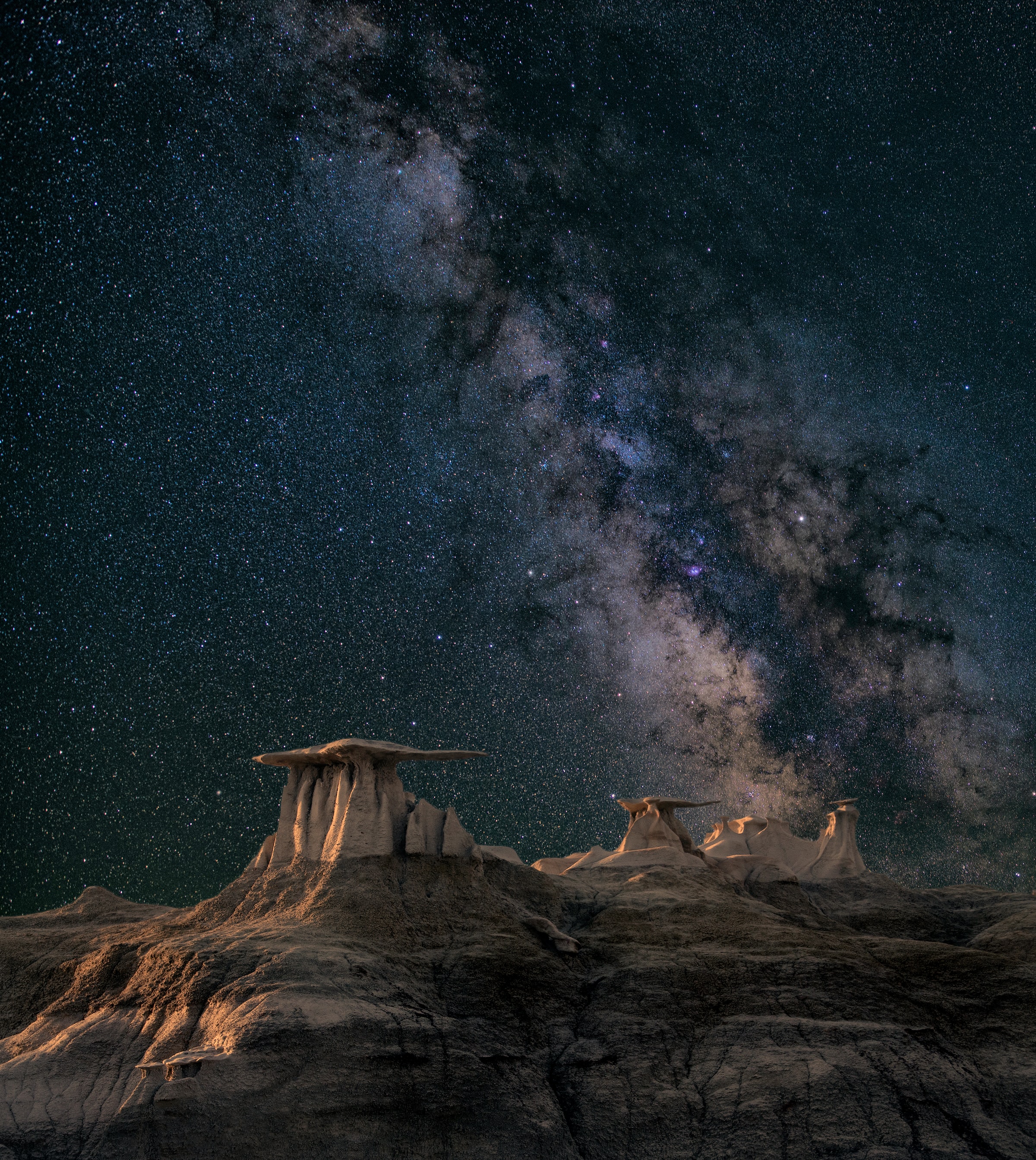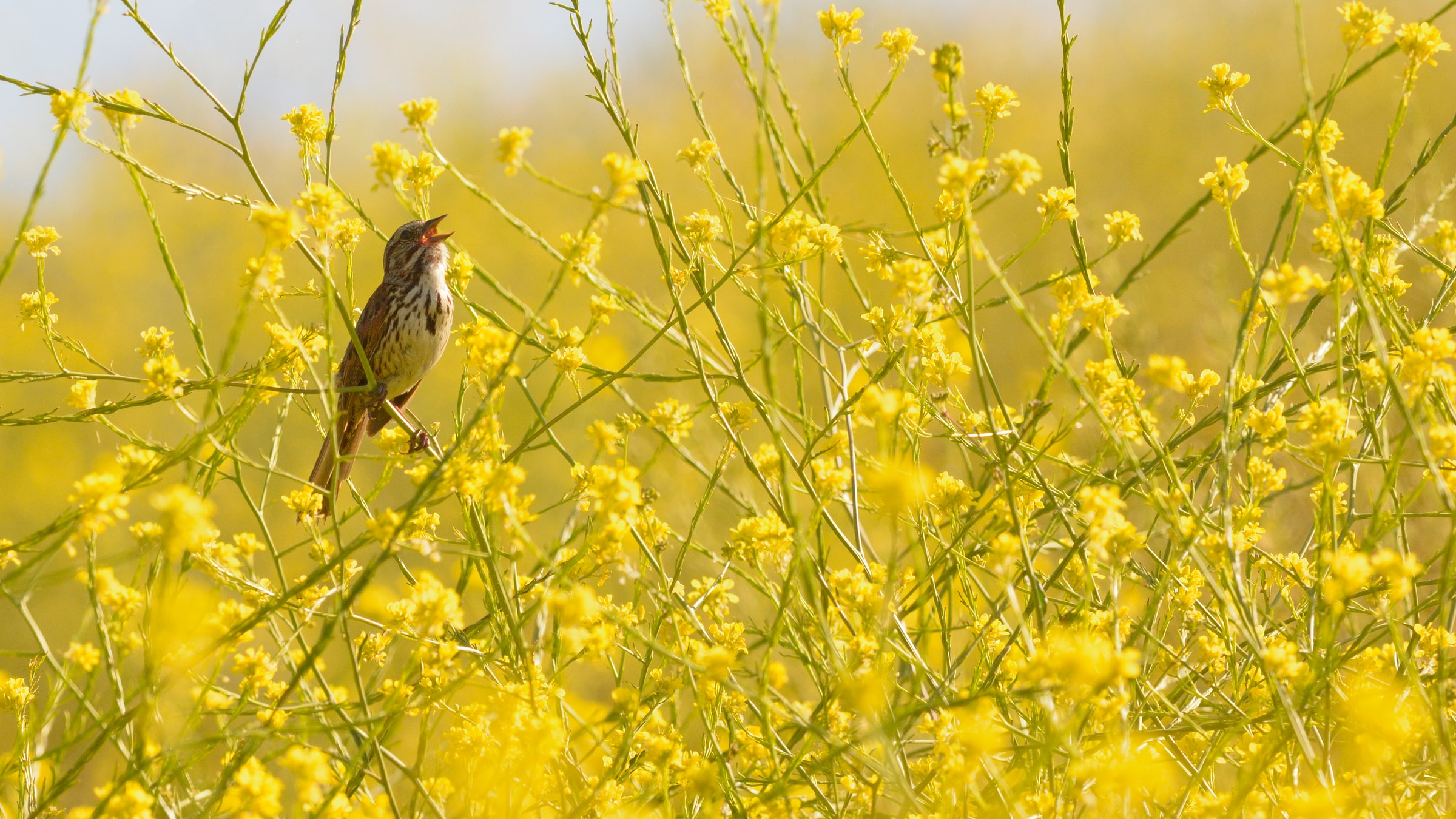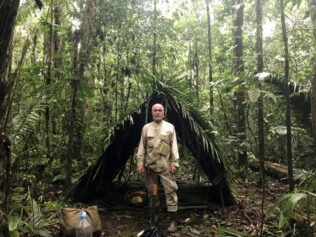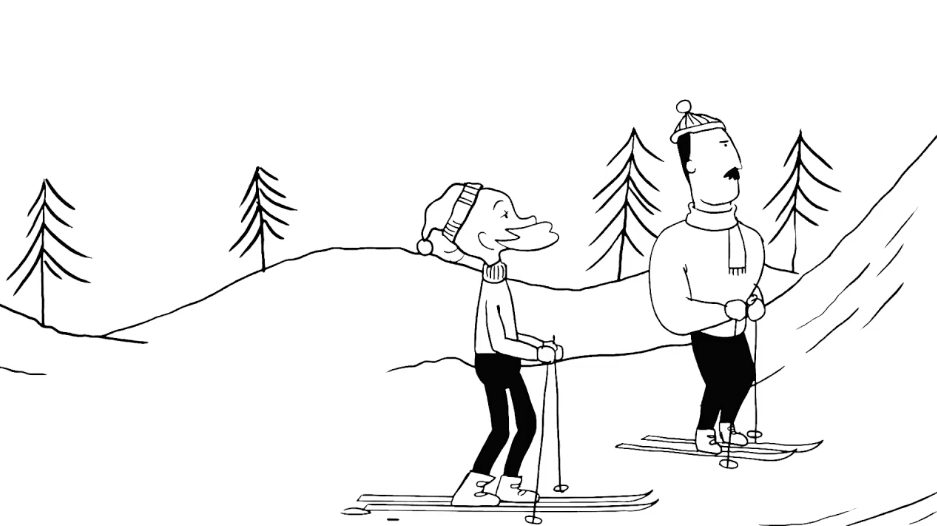
We search for beautiful views to capture them in photos. But musician Marcin Dymiter reminds us that a beautiful soundscape also counts, one where swishing trees, chirping sparrows, and the buzzing of bees play first fiddle.
Field recording is a way of documenting sounds in their natural environment. At the turn of the 19th and 20th centuries, this method was mainly employed in ethnography—researchers would record folk songs and music. But field recording also serves to document the sounds of nature. Before my conversation with Marcin Dymiter I’d been listening to his album Field Notes #4: Pejzaż Dźwiękowy Pomorza (“The Soundscape of Pomerania” in English). It was a cold, cloudy evening, but when I closed my eyes, I was surrounded by the croaking of frogs, the trills of great reed warblers from the nature reserve of the Baltic Sea’s Sobieszewo Island, the splashing of waves. I am momentarily (and mentally), transported to a summer day by the lake where I often kayak, listening to birds and the rustling of reeds. Even the most beautiful picture wouldn’t have taken me there. My face felt the warmth of the sun, and I could smell the slightly muddy water.
Aleksandra Kozłowska: Sound can take one on a journey through time and space. Is this why you’re making recordings for the Field Notes series—sounds from places you’ve visited?
Marcin Dymiter: Sound can indeed fully engage us in stunning ways, taking up the entire space, so that a person does not miss the visual sphere. I don’t know if this is related to one’s predispositions or to the atmosphere. In the busy everyday, listening is a unique experience.
You point this out in your book Notatki z terenu (“Notes From the Field”), where the focus isn’t on listening to the environment in some exotic and exciting setting, but in your own neighborhood, in a local park. If you’re abroad, you eavesdrop away from tourist attractions. When you collect sounds from Prague, it’s not on the Charles Bridge, but at the foot of Strahov Monastery or in the Hvězda Nature Reserve. As you write: “Hvězda is about moving back in time. What was the sound of places before the age of electricity and without internal combustion engines? Although it’s a psychoacoustic illusion, it seems to me that the constant noise, that has settled for good in cities, disappears [here].”
In areas that are exotic for Europeans—in Asia, Africa, or Patagonia—everything tastes, looks, and sounds different. Novelty strongly activates the brain—we absorb new things because they’re interesting. But when visuals dominate, the process of becoming enthralled with our surroundings is very short, and the soundscape becomes a background to which we don’t pay attention. I myself am very careful not to combine field recordings with tourist attractions: here is someone on the northernmost little island recording a shark, another person is riding a crocodile in the water… Such a recording would be an extension of mass tourism, showing a world that is absolutely meant to be attractive. Both in my recordings and my texts, I try to show an aural reality, which doesn’t have any pretensions. It doesn’t have to please a potential tourist. It is what it is.
Discovering the ordinary in the realm of sound is for me the most profound experience. It’s completely different from admiring the sights through bus windows, from tours or with a list of “must-sees” in hand: I saw this, I ate this, I drank that. I’ve been to Rome. Okay, I’m going back.
Tick.
Exactly. Speedy experiences. Communicating over the internet, doing things digitally means there is almost no such thing as anticipation. Everything happens instantly. Listening, by contrast, forces us to reflect on time; to learn that it flows, that you have to wait, for example, for a big wave by the sea or for the sound of some animal, even though you might still not hear it). Nature doesn’t have to meet our expectations. This is very interesting in the context of the anthropocentric perspective, according to which everything revolves around us, everything is owed to us. When listening, we have to accept that we are part of the environment.
…that we have to adapt, and approach nature with humility.
Yes, and meanwhile the “taming” of the world is done through its commercialization. The trivialized world seems flat and homogenous, like the postcard image on a computer screen. It’s different when it comes to the relationships between sounds—their world is much more complicated. It has its own energy and rhythm, and it takes some time to interact with it.
As for the exploration of seemingly simple spaces, I really like liminal places, where it’s hard to distinguish what is what—are we still in the city, or is it already the countryside? There are no clear indications, like when recording insects or green space in Prague. Such areas fascinate me as part of urban planning, since they are used for rest and leisure. I was very taken with the fact that in the parks of Prague a lot of people read, and there are orchards where people come to pick fruit. In Italy, on the other hand, people talk loudly in such places, whereas Scandinavian park visitors keep their distance… People rarely shout or play music from speakers.
I remember your sound installation, entitled “Mya.” You recorded the sea at various hours of the day and night, in different seasons, on the shore and underwater. But you avoided the tourist hustle and bustle like the plague.
Definitely. In the summer season, I don’t go to the beach. It doesn’t give me any pleasure, because it feels like a shopping mall. Unless it’s a location yet undiscovered by the crowds, but there are fewer and fewer places like this, unfortunately.
What is the reason for the lack of respect and understanding for the natural sound world? Why is it so necessary to loudly play a smartphone playlist?
The culture of portable radios exploded in Europe and around the world in the 1960s. At almost the same time, the UNESCO provision on the right to silence in public space appeared. I’ll read it to you. Oh, here it is—the Ecology of Music page on Wikipedia [PL]:
The first person to officially oppose environmental pollution with music broadcast in public places through loudspeakers was Witold Lutosławski. In October 1969, on his initiative, the UNESCO International Music Council adopted the following law: “The General Assembly of the UNESCO Music Council […] unanimously condemns the unacceptable violation of the personal freedom and of every human being’s right to silence by the abuse of recorded and radioed music in public and private places.”
In 1985, the European Parliament adopted the resolution “Privacy of sound and individual freedom of musical choice,” in which it exhorted all governments to be more attentive to the problem of unwanted or excessive music and sounds. In addition, they introduced a ban on playing music in some places, like public parks or beaches.
So it’s no fad, demanding silence.
Of course. Alexander von Humboldt wrote that the loudest noise he ever encountered was that of a volcanic eruption. Figuratively speaking, such eruptions happen at every moment, airplanes being an example. The definition of what a pleasant environment and silence are has changed significantly. The fact that we’re dazed from music and surrounded by media blocks our curiosity about the world. We’re not interested in the sounds it makes, because we have our own. You go everywhere with them. You appropriate every space with them. This already has the characteristics of violence. My recent observations aren’t optimistic either. During the family walks and sound workshops I run, switching off their cell phone is sometimes a serious problem for children. Without it, walking is boring.
You’ve been working on field recordings for twenty years. How has our soundscape evolved over this time?
The number of cars has increased, so the noise has intensified. There have been new technological advances in the form of quad bikes and other vehicles that cross the length and breadth of forest areas, scaring away animals and silence enthusiasts. Nature reserves and landscape parks are cultural constructs and inventions, which create artificial boundaries. The question is what would happen without them? What would happen to forests? There are places on Earth which can not be disturbed, since they’re considered exceptional. The rest of the environment doesn’t have such a status. This is why in my field recordings I enact a kind of a reversal. I don’t visit all those special places, but focus on the ordinary or even banal ones. For me, each part of the world is very important, especially as far as the natural environment is concerned.
Where do you look for these places, do you create your own maps of areas that civilization has not yet reached?
It varies a lot. It’s true that I like looking at maps. Sometimes I’ll read something intriguing; sometimes I’ll come across something by chance. I’m not looking for silence, because today that’s a challenge. I’m searching for a more “balanced” environment, or one where I won’t have to listen to the sound effects of civilization. It’s worth asking myself: When was the last time I heard anything other than the sounds produced by humans?
In the process of field recording, the journey can sometimes be more important than the destination, the chosen point of arrival. You can always stray off the beaten path when suddenly some unexpected sound draws you in. This is what is really fascinating—the world of sound can’t be planned. It has all the qualities of a living organism; it’s the sum of different activities, seasons, weather, and many other things. By noticing this, you can feel part of a world which is not disconnected from its natural rhythm. There is a time when animals are asleep, and a time when they sing. Some are active in the morning, others at night. Consistently.
I like your idea that listening is a way of letting go of the compulsion to control reality, as well as a moment of silencing the ego. It counters the culture of selfies, narcissism, and the ongoing call of “Look at me!”
This adventure with field recording reconfigured my listening skills, and helped me reduce the need to make sounds. I started to wonder (also as a musician) about what I was actually generating, what kind of sounds I was making and why. Listening to my surroundings, I noticed a certain regularity. Some things can be articulated by looking for consonance rather than dominance in space. I started to play quieter and use different timbres. I became fascinated by the correspondence, the dialog of sounds, as well as the fact that you don’t have to strive for suspense—you don’t need to be like a rabbit pulled out of a hat to show everything you can within fifteen seconds. Sometimes it’s enough for me to hear three sounds and I don’t want to listen to music anymore, because I know I’ll have to spend forty seconds with someone else’s irrepressible ego. The world is too wonderful to pay attention to those who focus mostly on themselves. After all, it can be entirely different: we can create a space where both musician and listener can breathe.
I think that one can also find breathing space in those places that you describe in Notatki z terenu: a cemetery in Naples, a bookstore in Berlin, or the outskirts of Lisbon. You’ve created something of a guide to trails other than the well-trodden ones.
I go off the main routes. I prefer to listen to the whispers the world gives me. When I was writing about Prague, I decided to look at it from the perspective of green spaces. I wanted to map them. This led me to points I would never have reached otherwise.
This is one of the paradoxes of our society. We surround ourselves with concrete and noise, but long for nature. Perhaps it was this feeling that influenced the beginnings of recording its sounds? Ludwig Koch recorded birdsong for the first time in 1899. Maybe already back then people felt the world was disappearing, and it was essential to preserve it, like supplies for the winter, the hard times? You’re also a person who makes such preserves.
I like this comparison very much—a person who makes preserves. They’re also an archivist, sometimes a curator.
Perhaps one day we’ll be left listening to the sound of rain on an app?
That’s a possibility. A soundscape is an abstract space. On the other hand, it is also accompanied by a reflection on the structure of a city. There are some where residents themselves eliminate traffic to preserve the natural sound of the place, such as Copenhagen, or Lübeck—where I walked down Hüxstrasse, a street that is mostly pedestrianized. There, however, social aspirations and priorities are different.
In places where the car is still a status symbol—as in Poland—the situation of the phenomenon called “acoustic ecology” is difficult. In my workshops, people are eager to share what bothers them, what kind of noise they find particularly annoying. It’s harder to find out what they like. We don’t yet have a register for noticing it. We don’t say things like, “Listen, how wonderful our market sounds.” It is very important to preserve spaces that allow people to get to know the city through sounds.
We’re living in a time of mass species extinction. Languages are also dying out. What about sounds? In Notatki z terenu, you describe a trip to record the sound of a hundred-year-old reel-to-reel.
Live music practically doesn’t exist anymore. The local color of cities has changed all around the world. In the past, the same pianist would perform in the same club for years, but now they’ve been replaced by a DJ. We’re losing touch with instruments, with performing, singing, and their social functions. We’re forgetting that we can make music together—on the street, or on the bench outside an apartment block. If someone performs in public, for instance in a local park, they often have a stand, a microphone, and a speaker. People, play acoustically and don’t take up all the space! Musicians have already been affected by performativity—everything needs to resemble a show so that people will record them with their phones.
There are new sounds. Old elevators from the 1980s would only produce a humming noise. Now we hear announcements: floor seven, floor eight, etc. Audio recordings are on buses, streetcars, at the self-checkouts in stores. The idea of conversation has also changed. Landlines and telephone booths gave a sense of privacy. Now conversations are going on everywhere. In an acoustic sense, space has become more crowded. At the same time, the uniqueness of the soundscape is disappearing, and with it a sense of identity. The world is beginning to sound the same almost everywhere.
Maybe not entirely. Have you ever come across a mystery sound, like the one captured by the protagonist of Brian De Palma’s Blow Out, while he’s recording wind effects?
Birds or gas mains can make mysterious resonances, whose source might be concealed, for example, by echo. The sounds I enjoy are those related to the history of a given space, like a creaking or old floor, as well as the acoustic presence of the plant and animal world. Then there’s water.
At the beginning, I talked about sound as a vehicle for time and space. I’m going to circle back and wrap this up by asking you about your madeleine de Proust?
There are quite a few of them. I really like the sound of the calm sea. However, I want to emphasize that sounds don’t necessarily need to be connected with personal sentiments. I remember the sounds of the sea from my childhood and, thankfully, they haven’t disappeared. I like the rustling of reeds on the lake and the swishing of trees as a constant, in contrast to urban, mechanical noise. This natural hum is connected with the wind, it’s changeable. It comes, disappears, returns, moves away; it’s fluid. There’s also the sound of echoes. It’s always fascinated me, it’s really something.
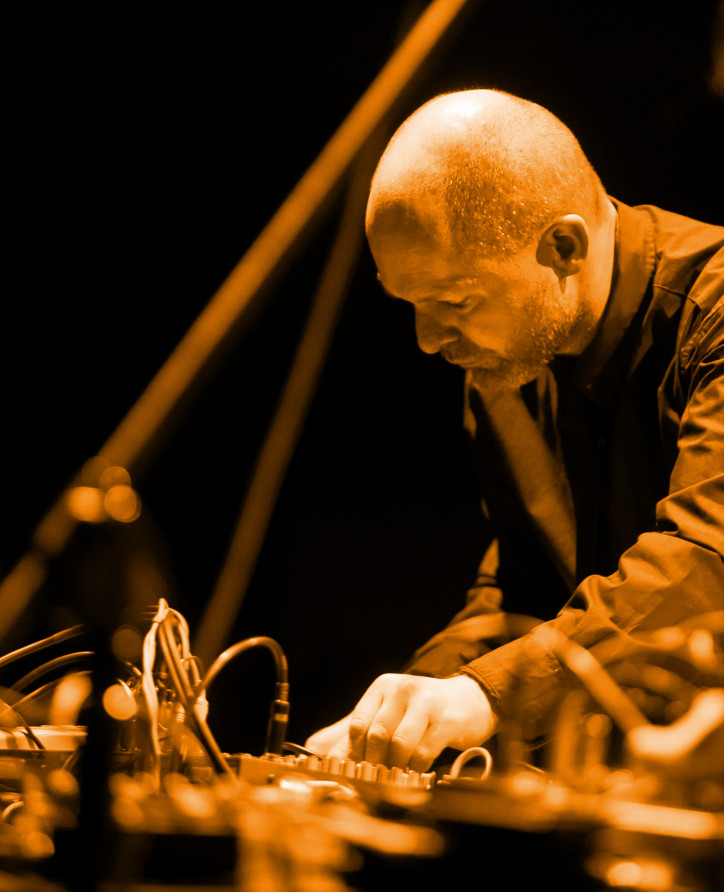
Marcin Dymiter:
Music producer and former leader of the band Ewa Braun. A pioneer in Polish field recordings, he has been traveling the world and lending an ear for twenty years.
Translated from the Polish by Joanna Mąkowska


